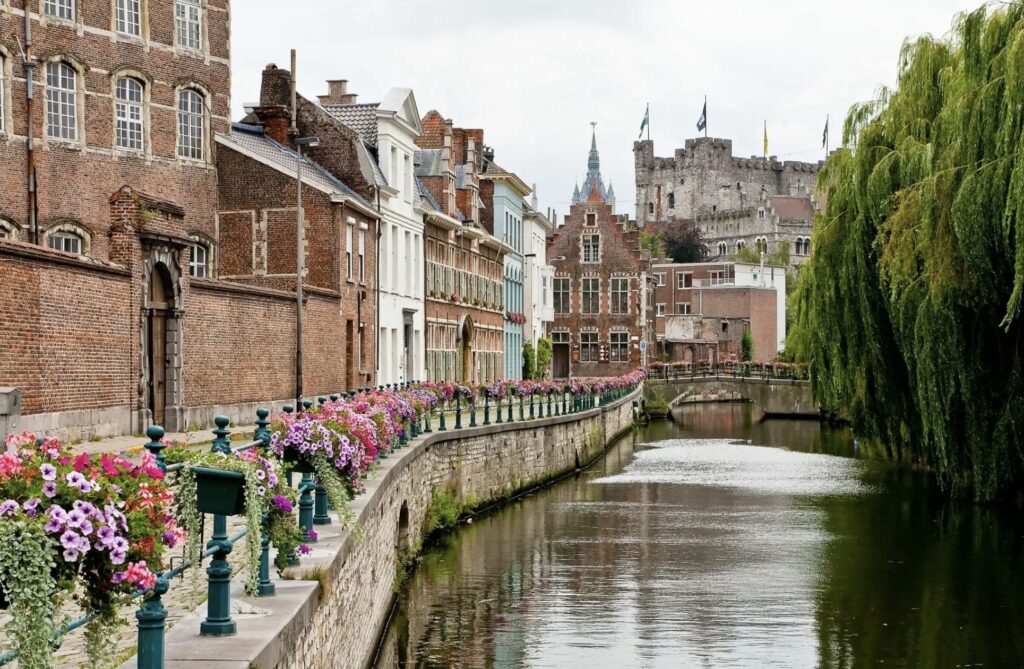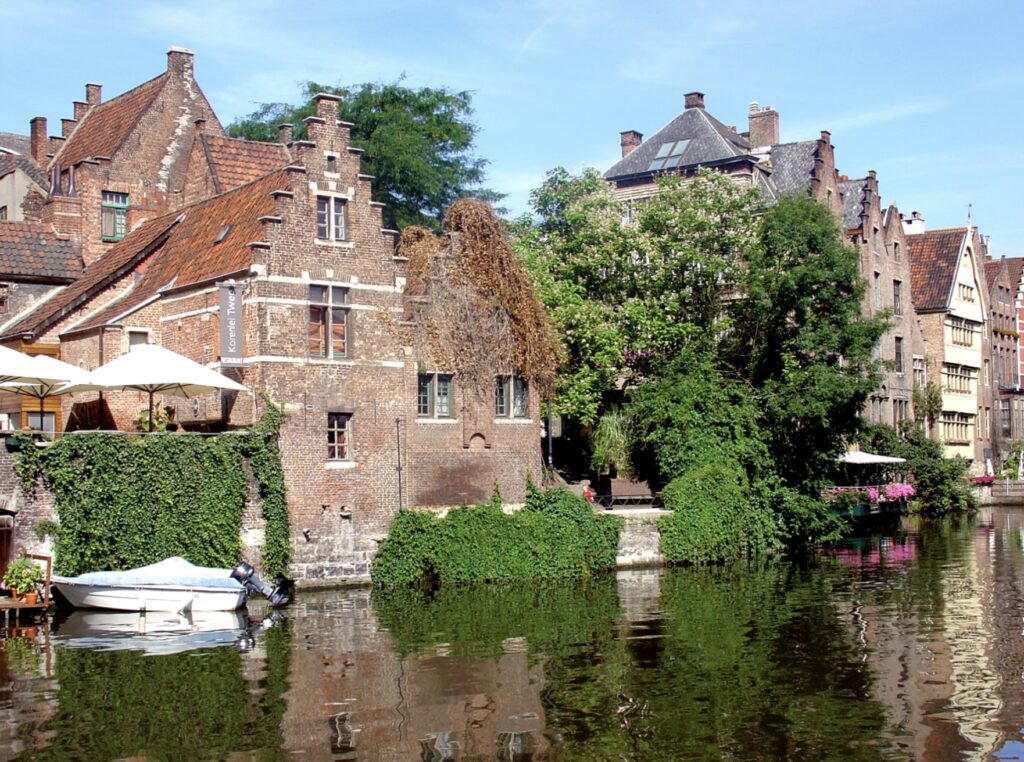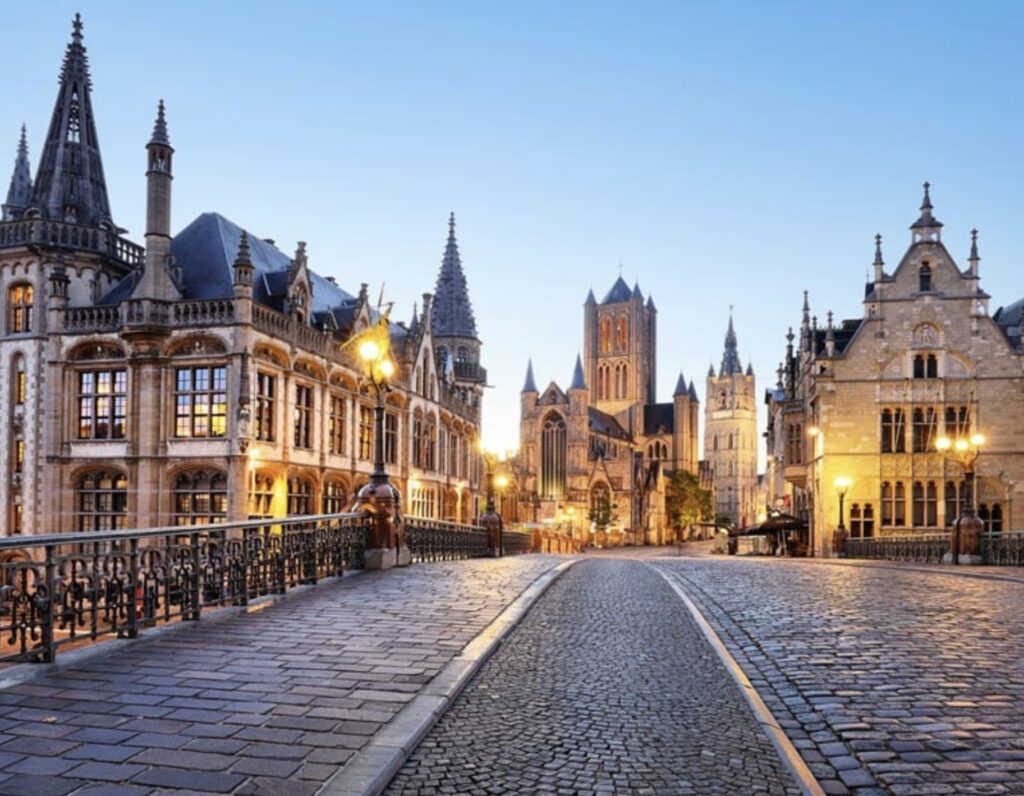ChatGPT:
Ghent (Gent in Dutch) is a vibrant city in the Flemish region of Belgium. Known for its medieval architecture, Ghent offers a rich history alongside a lively modern cultural scene. Key highlights include:
- Historic Architecture: The city is renowned for its well-preserved medieval buildings, including the impressive Saint Bavo’s Cathedral, which houses the famous Ghent Altarpiece, and the Gravensteen Castle.
- Canals and Bridges: Ghent is interlaced with picturesque canals and historic bridges, giving it a charming and romantic atmosphere. The Graslei and Korenlei are particularly scenic areas along the old harbor.
- Cultural Scene: Ghent is a cultural hub with numerous museums, theaters, and music festivals. The Museum of Fine Arts and the STAM city museum are notable attractions.
- Education and Innovation: Home to Ghent University, the city has a youthful vibe with a strong focus on education and innovation.
- Nightlife and Cuisine: Ghent boasts a vibrant nightlife, with numerous bars, cafes, and restaurants offering a mix of traditional Flemish dishes and international cuisine.
Ghent’s history spans over a thousand years, marked by periods of prosperity, conflict, and cultural development. Here are key highlights:
Early History
- Prehistoric and Roman Periods: The area around Ghent has been inhabited since prehistoric times. During the Roman era, there were settlements, but Ghent did not gain significant prominence until the early Middle Ages.
Middle Ages
- Formation and Growth: By the 9th century, Ghent was becoming an important settlement. It grew around the confluence of the rivers Scheldt and Lys.
- Economic Boom: From the 11th to the 13th centuries, Ghent became one of the largest and richest cities in Europe, primarily due to its thriving textile industry. The city was known for its woolen cloth production.
- Political Significance: Ghent gained a reputation for its independent and rebellious spirit. The city often clashed with its rulers, particularly the Counts of Flanders and later the Burgundian dukes.
- Guilds and Power: The guilds, representing various trades, played a significant role in the city’s political and economic life, contributing to Ghent’s relative autonomy.
Renaissance and Early Modern Period
- Decline and Rebellion: In the 16th century, Ghent experienced economic decline due to competition and political instability. The city was also involved in the larger conflicts of the region, including the Eighty Years’ War against Spanish rule.
- Religious Turmoil: The Protestant Reformation and the Catholic Counter-Reformation brought religious conflict to Ghent. The city witnessed significant upheaval, including iconoclasm and repression.
18th and 19th Centuries
- French and Dutch Rule: Ghent, like the rest of Belgium, was influenced by the shifting control between French and Dutch rule in the late 18th and early 19th centuries. It was during this period that the Treaty of Ghent (1814) ended the War of 1812 between the United States and Britain.
- Industrialization: The 19th century saw a revival in Ghent’s fortunes with the advent of industrialization. The city’s textile industry was revitalized, and new industries emerged.
20th Century to Present
- World Wars: Ghent was occupied during both World War I and World War II but did not suffer extensive damage compared to other cities.
- Post-War Development: After WWII, Ghent continued to grow and modernize. The city expanded its educational institutions, including Ghent University, and developed a vibrant cultural scene.
- Modern Ghent: Today, Ghent is a dynamic city that blends its rich historical heritage with modern innovation. It is known for its cultural festivals, sustainable development efforts, and as a center of education and research.
Ghent’s development over the centuries has created a city that balances historical preservation with contemporary progress, making it a unique and attractive place in Belgium.
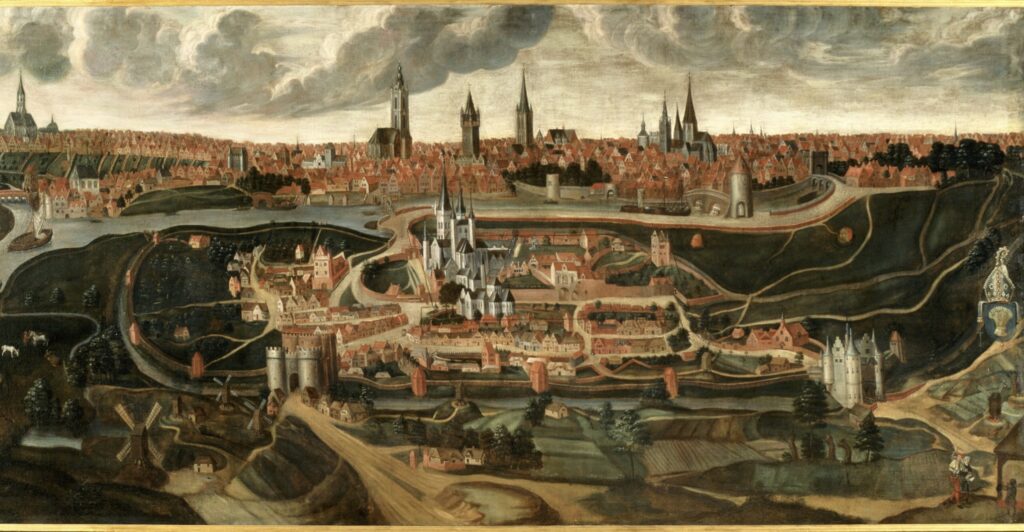
Ghent is home to numerous historical monuments and tourist attractions that reflect its rich cultural heritage. Here are some of the most notable:
Historical Monuments
- Saint Bavo’s Cathedral (Sint-Baafskathedraal):
- Famous for the Ghent Altarpiece, a masterpiece by the Van Eyck brothers.
- The cathedral features impressive Gothic architecture and beautiful stained glass windows.
- Gravensteen Castle:
- A medieval fortress in the heart of the city.
- Offers panoramic views of Ghent from its towers and houses a museum of medieval weapons and torture devices.
- Belfry of Ghent (Belfort van Gent):
- A UNESCO World Heritage site.
- The 91-meter tall tower provides stunning views of the city and houses a dragon weather vane and a set of 54 bells.
- Saint Nicholas’ Church (Sint-Niklaaskerk):
- One of the oldest churches in Ghent, showcasing beautiful Gothic architecture.
- Located near the historic center and offering a serene atmosphere for visitors.
- Saint Michael’s Bridge (Sint-Michielsbrug):
- Provides iconic views of Ghent’s medieval skyline, including the Three Towers of Ghent (Saint Nicholas’ Church, the Belfry, and Saint Bavo’s Cathedral).
- A popular spot for photos and sightseeing.
- City Pavilion (Stadshal):
- A modern architectural structure in the historic heart of Ghent.
- Used for various public events and activities.
Tourist Attractions
- Graslei and Korenlei:
- Scenic quays along the Leie River with beautifully preserved medieval buildings.
- Ideal for a leisurely stroll, boat tours, and enjoying the riverside cafes.
- Museum of Fine Arts (Museum voor Schone Kunsten):
- Houses a vast collection of artworks from the Middle Ages to the 20th century.
- Features works by Flemish masters such as Hieronymus Bosch and Peter Paul Rubens.
- STAM – Ghent City Museum:
- Offers insights into the history and development of Ghent.
- Exhibits include historical artifacts, interactive displays, and a detailed city model.
- Design Museum Gent:
- Showcases a wide range of design objects from different periods.
- Features contemporary and historical design exhibitions.
- Ghent University Botanical Garden:
- A peaceful green space with a diverse collection of plants from around the world.
- Ideal for nature lovers and those seeking a relaxing escape.
- Patershol District:
- A charming medieval neighborhood with narrow, winding streets.
- Known for its excellent restaurants, cafes, and unique shops.
- Graffiti Street (Werregarenstraat):
- An ever-changing canvas for street artists.
- A vibrant and colorful alley showcasing urban art.
- Vrijdagmarkt:
- A historic square that has been a marketplace for centuries.
- Surrounded by beautiful buildings and hosts regular markets and events.
These monuments and attractions highlight Ghent’s blend of historical significance and contemporary vibrancy, making it a must-visit destination in Belgium.
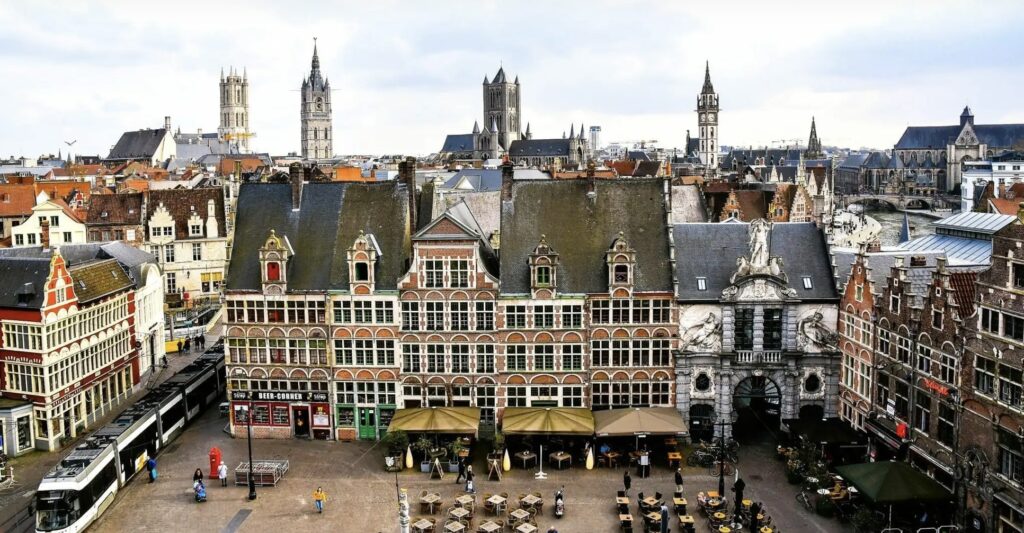
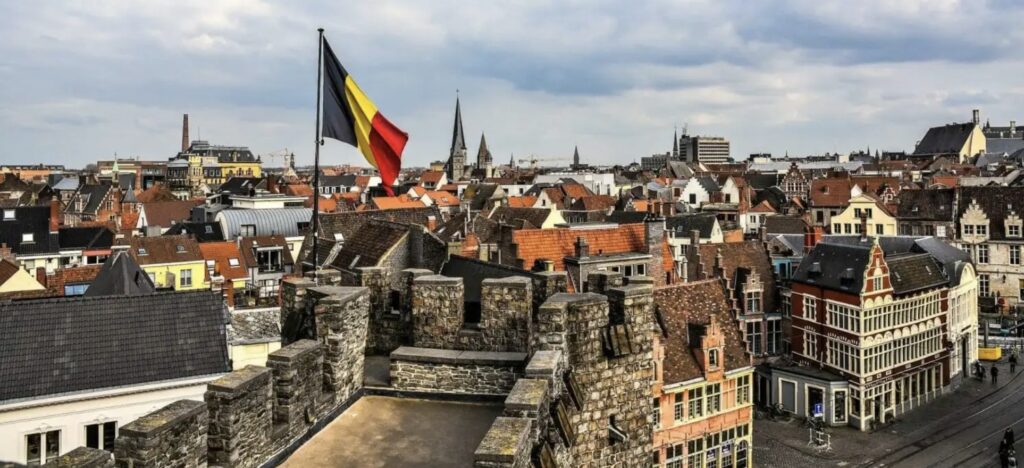
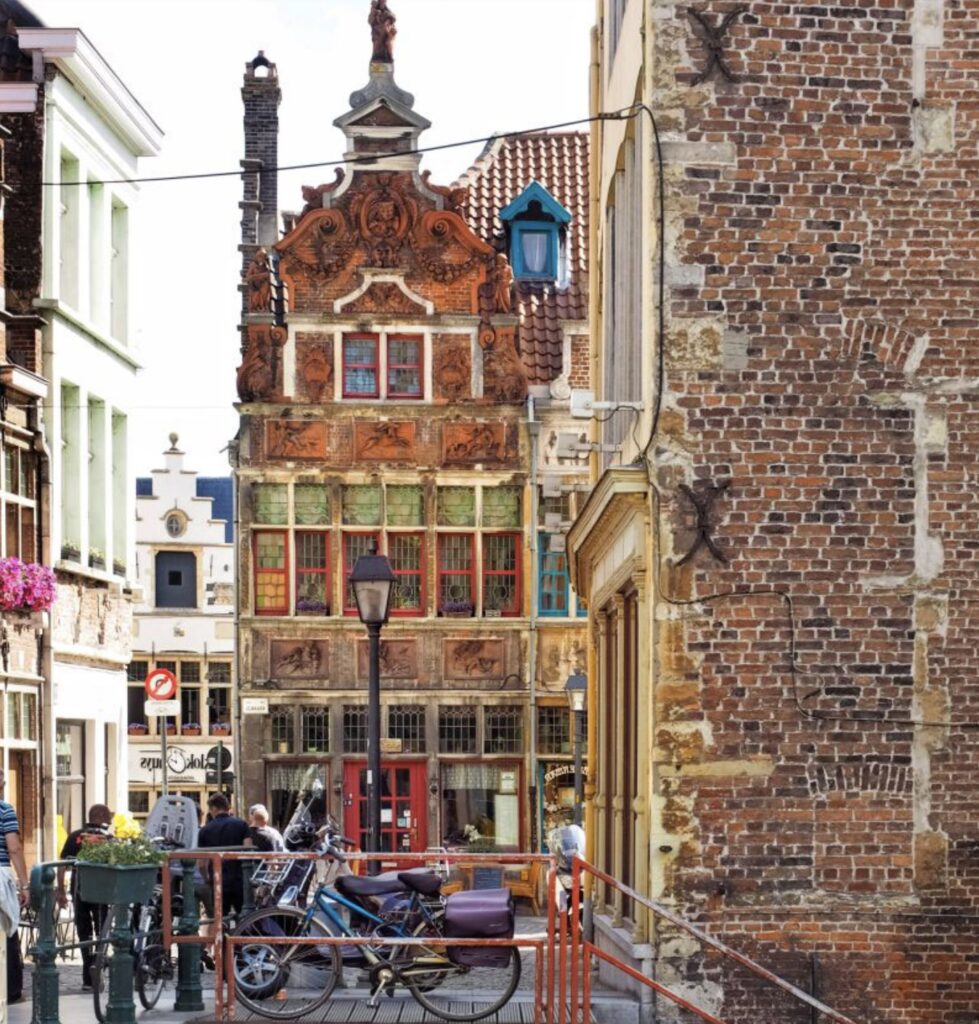
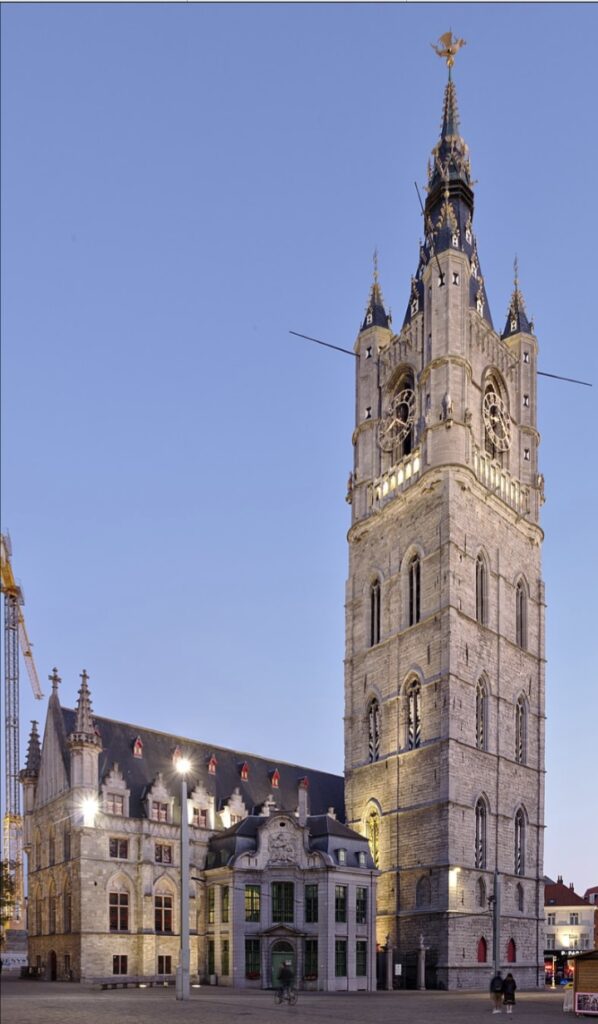
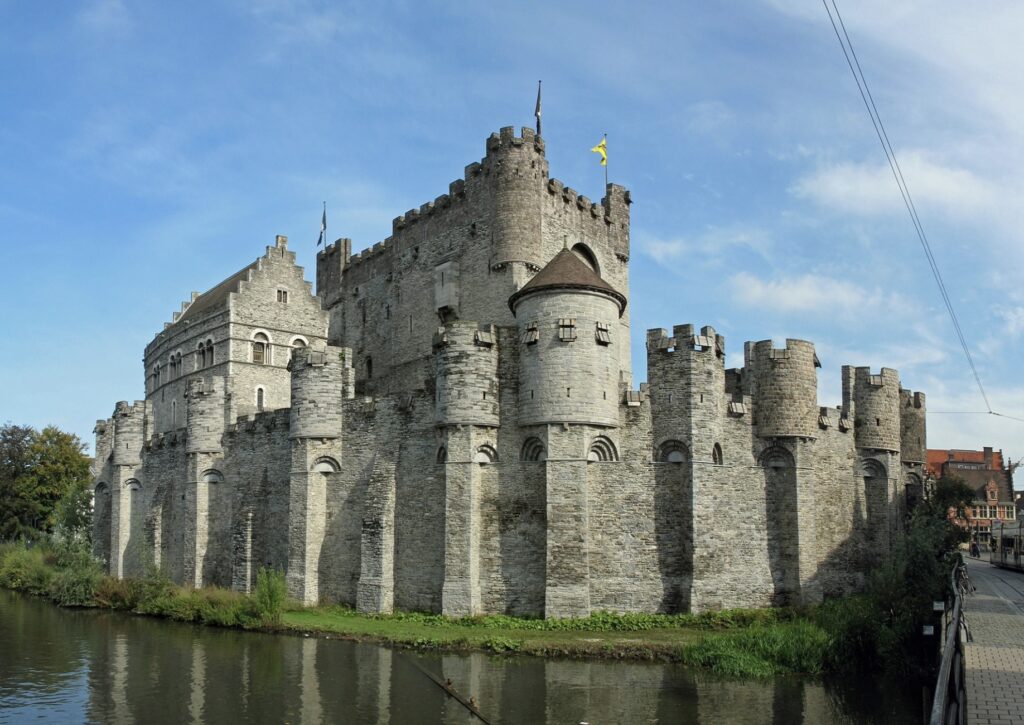
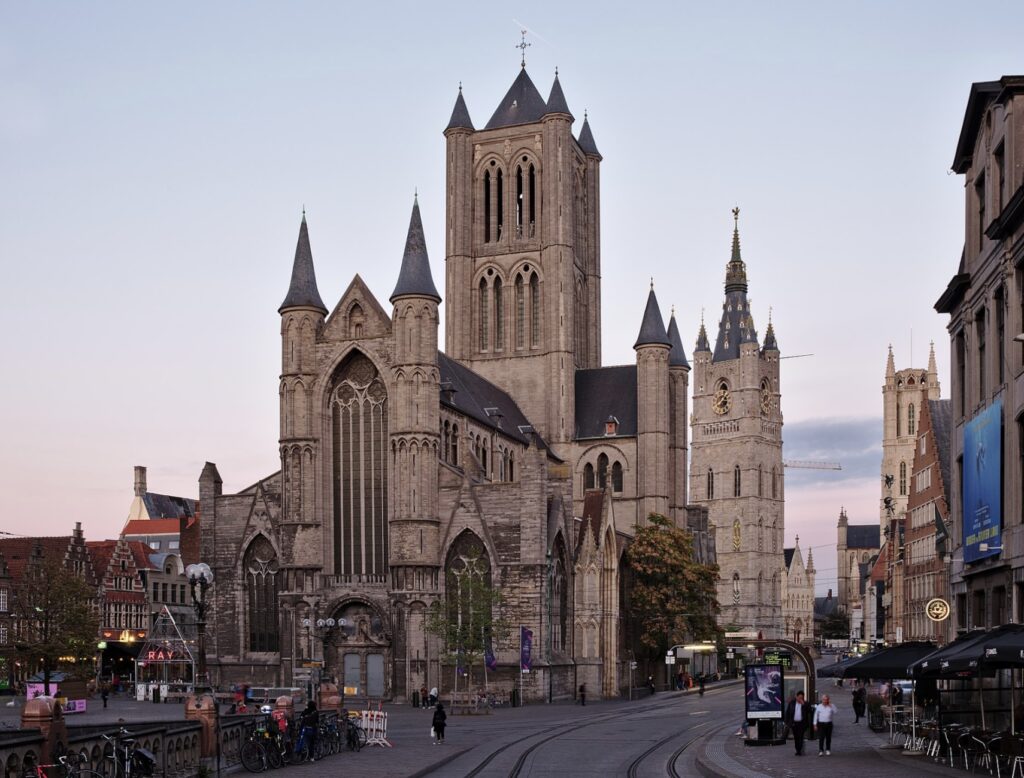
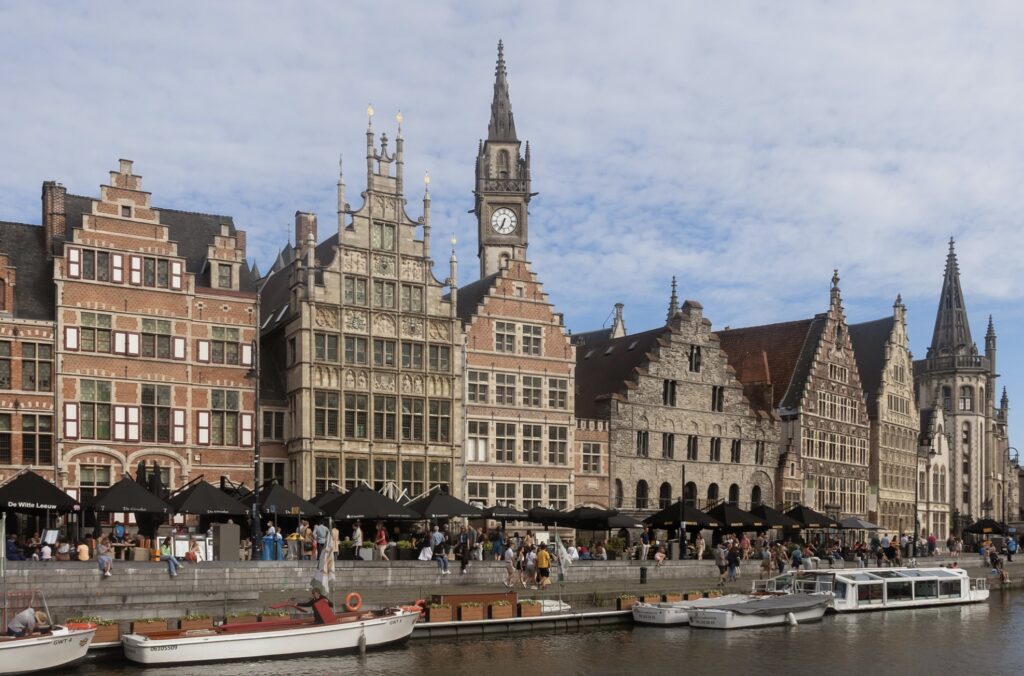
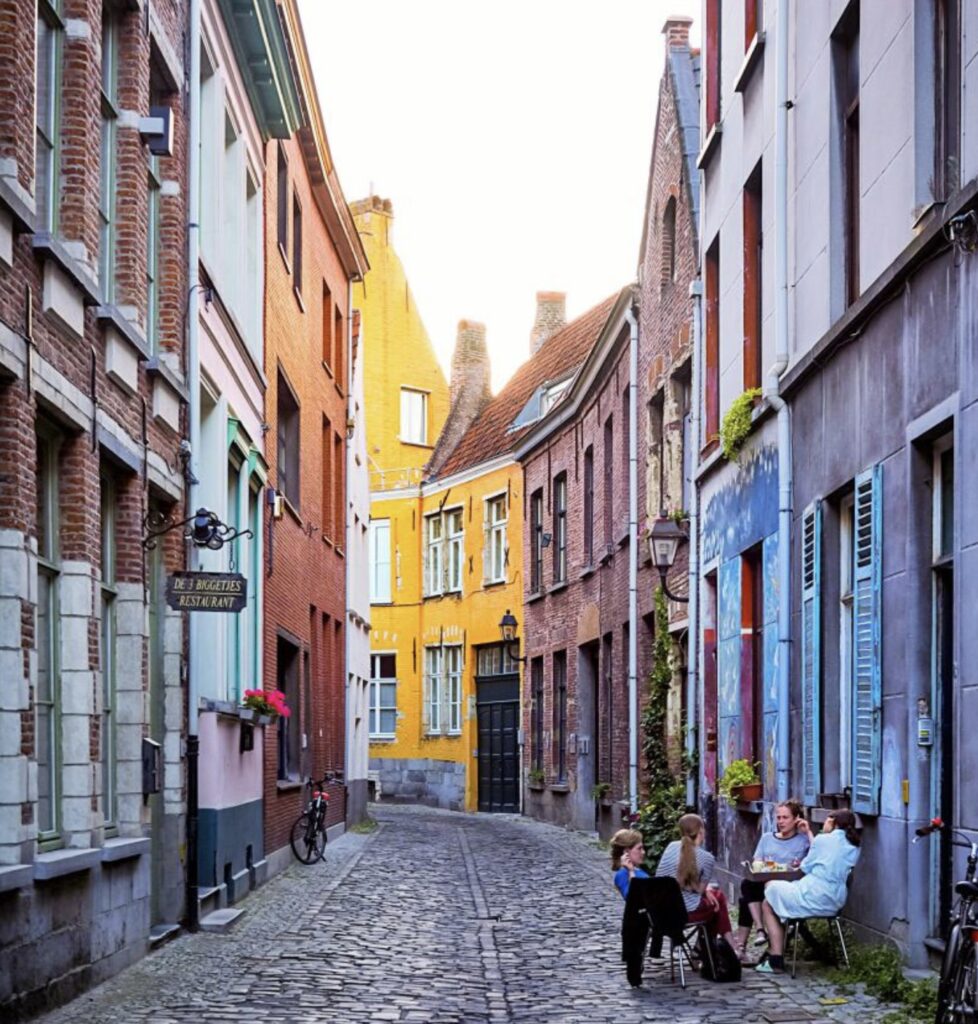
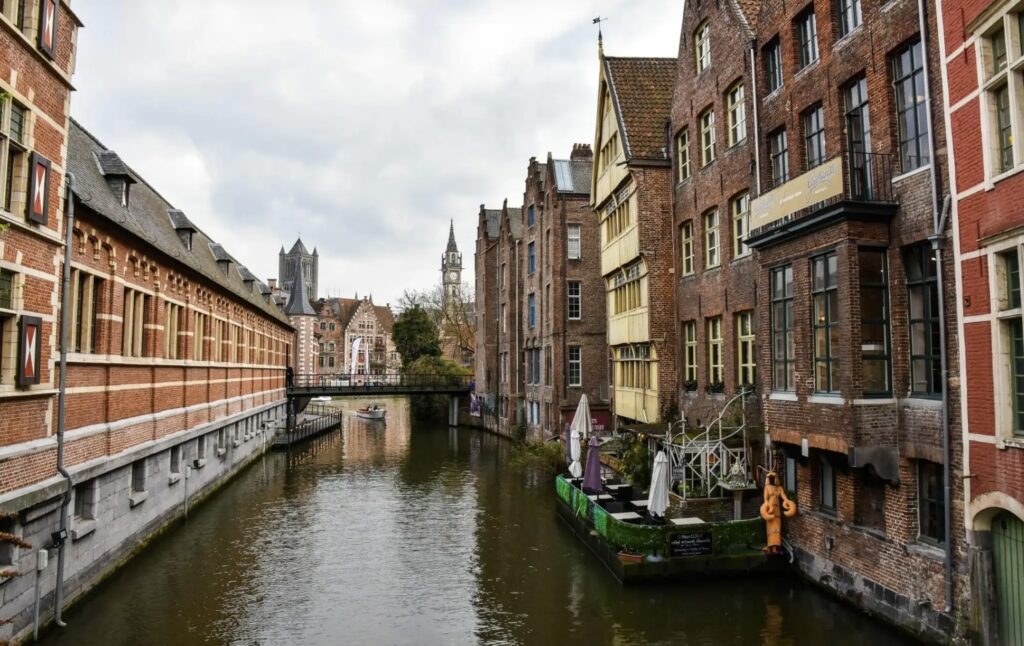
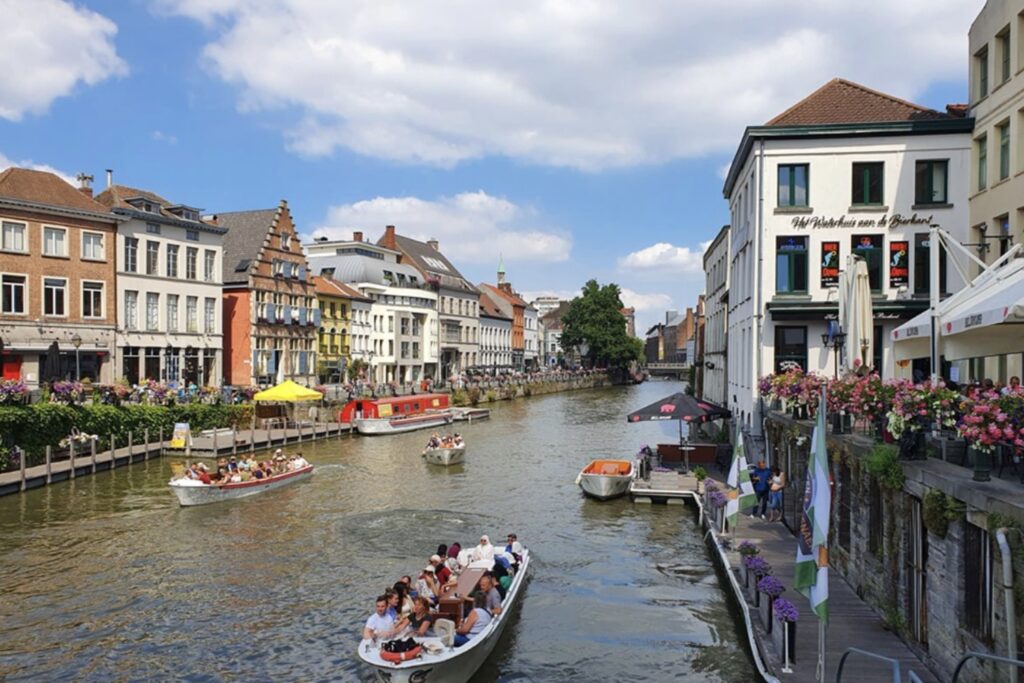
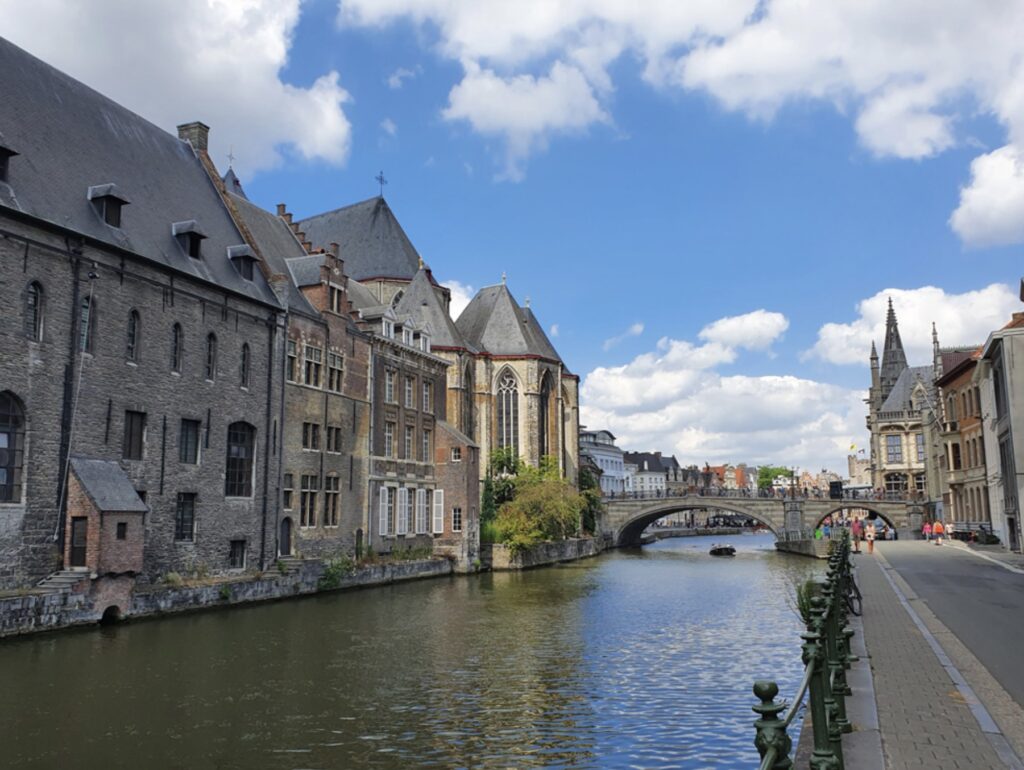
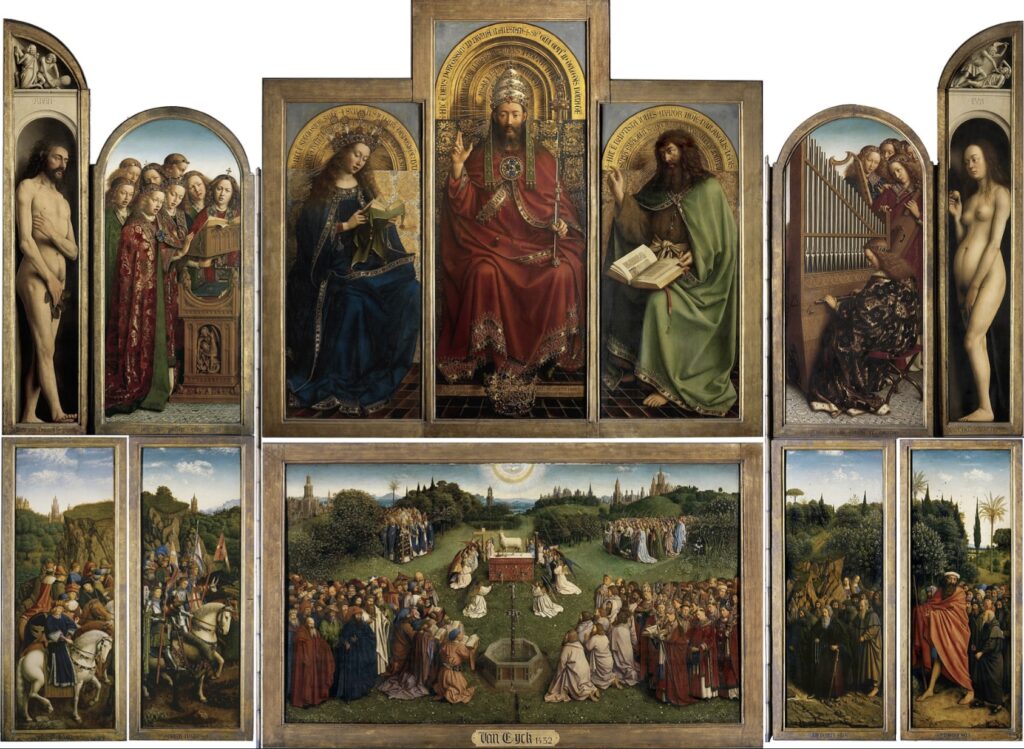
Ghent offers a variety of local food specialties that reflect its rich culinary heritage. Here are some must-try dishes and delicacies:
Savory Specialties
Waterzooi:
A creamy stew made with chicken or fish, vegetables, and potatoes.
Often served with a side of bread.
Gentse Stoverij (Ghent Stew):
A traditional Flemish beef stew slow-cooked with beer, onions, and spices.
Typically served with fries or bread.
Gentse Neuzen (Cuberdons):
Cone-shaped, purple-colored candies with a raspberry-flavored, gelatinous filling.
A unique and popular sweet treat in Ghent.
Tierenteyn Mustard:
A spicy mustard made by the Tierenteyn-Verlent family since the 18th century.
Often used as a condiment with meats and sandwiches.
Hutsepot:
A hearty vegetable and meat stew, often made with pork, sausage, and various root vegetables.
A comforting and filling dish, especially in colder months.
Gentse Mastellen:
Sweet bread rolls often flavored with cinnamon and sometimes used to make a type of French toast called “kletskoppen.”
Sweets and Desserts
Ghent Waffles:
Light and crispy waffles typically served with powdered sugar, whipped cream, or fruit.
A popular street food and dessert.
Speculoos:
Spiced shortcrust biscuits often served with coffee.
Known for their distinct flavor, which comes from spices like cinnamon, nutmeg, and cloves.
Chocolate and Pralines:
Ghent, like the rest of Belgium, is famous for its high-quality chocolates and pralines.
Numerous chocolatiers offer a wide variety of handmade confections.
Beverages
Ghent Beer:
The city has a rich brewing tradition with several local breweries producing a variety of beers, including Belgian ales, lambics, and specialty brews.
Notable breweries include Gruut Brewery and St. Canarus Brewery.
Jenever:
A traditional Belgian and Dutch spirit flavored with juniper berries.
Often enjoyed as an aperitif or digestif.
Ghent Coffee:
Coffee culture is strong in Ghent, with numerous cafes serving high-quality brews.
Try a local specialty coffee or simply enjoy a traditional Belgian coffee with a speculoos biscuit.
These local food specialties offer a taste of Ghent’s culinary heritage, blending traditional flavors with unique regional touches.
One-Day Walking Itinerary in Ghent
Morning
- Start at Saint Bavo’s Cathedral (Sint-Baafskathedraal)
- Address: Sint-Baafsplein
- Highlights: Ghent Altarpiece, stunning Gothic architecture.
- Walk to Belfry of Ghent (Belfort van Gent)
- Address: Sint-Baafsplein
- Highlights: Climb the tower for panoramic views of the city, see the dragon weather vane and carillon.
- Visit Saint Nicholas’ Church (Sint-Niklaaskerk)
- Address: Cataloniëstraat
- Highlights: Gothic architecture, beautiful interior.
- Cross Saint Michael’s Bridge (Sint-Michielsbrug)
- Address: Sint-Michielsplein
- Highlights: Iconic views of the Graslei, Korenlei, and the Three Towers of Ghent.
Late Morning
- Explore Graslei and Korenlei
- Address: Along the Leie River
- Highlights: Medieval buildings, picturesque canals, perfect for photos and a leisurely stroll.
- Visit Gravensteen Castle
- Address: Sint-Veerleplein
- Highlights: Medieval fortress, museum of medieval weapons and torture devices, panoramic views from the towers.
Lunch
- Lunch in the Patershol District
- Address: Near Gravensteen Castle
- Recommendations: Choose a traditional Flemish restaurant for local specialties like waterzooi or Gentse stoverij.
Early Afternoon
- Walk through the Patershol District
- Address: Around Gravensteen Castle
- Highlights: Charming medieval streets, cafes, unique shops.
- Visit STAM – Ghent City Museum
- Address: Godshuizenlaan 2
- Highlights: History and development of Ghent, interactive displays, detailed city model.
Mid Afternoon
- Stop by Vrijdagmarkt
- Address: Vrijdagmarkt
- Highlights: Historic square, beautiful surrounding buildings, lively atmosphere.
- Explore Graffiti Street (Werregarenstraat)
- Address: Werregarenstraat
- Highlights: Vibrant street art, ever-changing graffiti.
Late Afternoon
- Visit the Design Museum Gent
- Address: Jan Breydelstraat 5
- Highlights: Contemporary and historical design exhibitions.
- Relax at Ghent University Botanical Garden
- Address: Ledeganckstraat 35
- Highlights: Diverse plant collections, peaceful green space.
Evening
- Dinner near Graslei and Korenlei
- Recommendations: Enjoy a meal at a riverside restaurant with views of the illuminated buildings and canals.
- Evening Walk Along the Canals
- Address: Graslei and Korenlei
- Highlights: Beautiful night-time views of Ghent’s historic architecture and canals.
This walking itinerary offers a comprehensive tour of Ghent’s major sites, allowing you to experience the city’s historical, cultural, and culinary highlights in one day.
